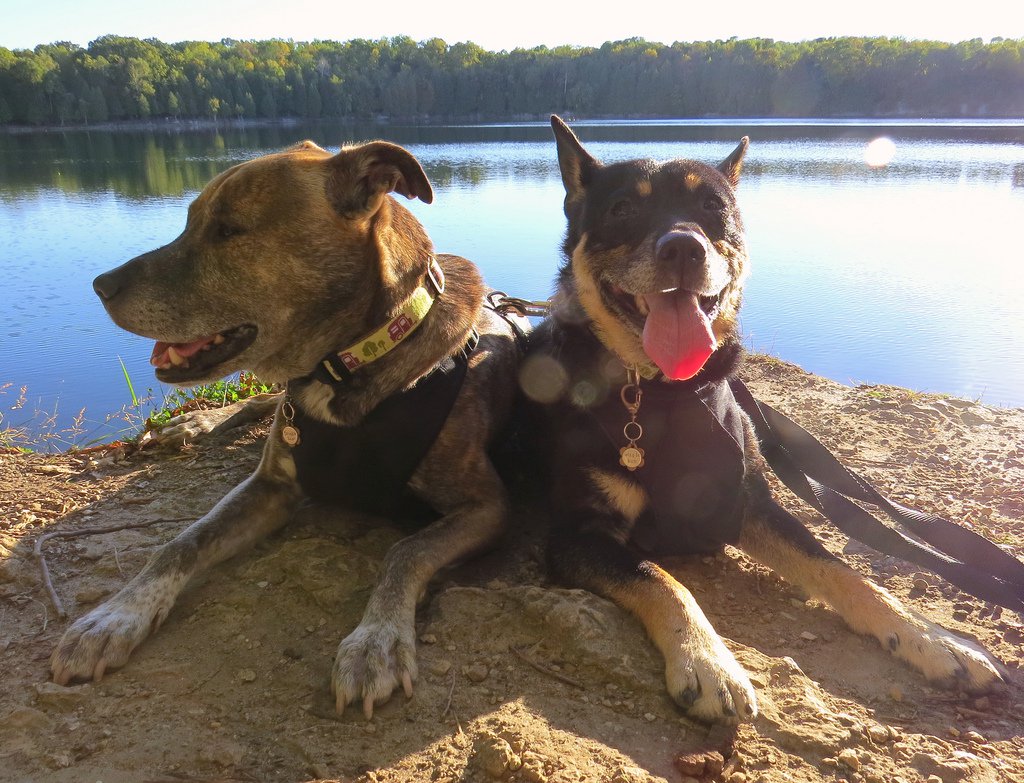First and foremost, check to see whether the camping area allows dogs, and familiarize yourself with the rules for pets at the site.
Talk to your veterinarian and make sure your dog is healthy and up-to-date on all required vaccinations, particularly rabies. Ask your vet whether your dog should be vaccinated against Lyme disease, a tick-borne disease. Discuss appropriate flea and tick control. Be sure your dog is protected against heartworms, which are transmitted by mosquito bite and have been reported in all 50 states, according to the American Heartworm Society.
Have an appropriate collar or harness with an identification tag. Use a cell phone number where you can be reached at all times, not a home phone number, on the tag. Microchipping your dog will provide an additional measure of protection in the event that your dog becomes lost. Register the microchip – or make sure the information is up to date if your dog already has a chip — so that you can be contacted when your dog is located.
Packing for Your Dog
Bring water for your dog to drink if a water supply is not available at the campsite. Do not allow your dog to drink out of standing bodies of water. Your dog should continue to eat his regular diet during the trip; pack enough food and treats to last for your entire stay. Pack a food dish and water bowl. Bring bedding and toys to keep your dog occupied as well. Take a copy of your dog’s health records and vaccination reports, especially important if you are crossing state lines. Other essential items include a leash and collar or harness, a carrier or other means to confine your dog when necessary, bags to pick up your dog’s waste, a first aid kit and any medications your dog takes regularly.
What To Do with Your Dog While Camping
Once at the camping ground, keep your dog on a leash or otherwise confined so that other campers are not disturbed and your dog is not at risk for becoming lost or injured. Be aware of keeping your dog away from things such as campfires and cooking utensils that can cause injury. A “leave it” command is also useful in case your dog begins to explore or picks up something dangerous in his mouth.
Keep your dog close to you during your camping expedition. If you are unable to supervise your dog, be sure he is properly confined. Do not leave your dog confined in a closed car or tied to a stationary object though. Provide a carrier, crate, or portable fencing unit instead.
While camping, check your dog’s fur and skin regularly for ticks as well as for plant material like thorns or burrs. Plant materials should be brushed free of your dog’s hair, if possible. In some situations, cutting or shaving the hair may be necessary to remove these items.
Remove ticks promptly by grasping the tick near the skin and pulling gently and slowly away from the skin. Wear gloves when doing so. Do not handle ticks with bare hands as they can transmit diseases to you as well as to your dog.
By Lorie Huston
